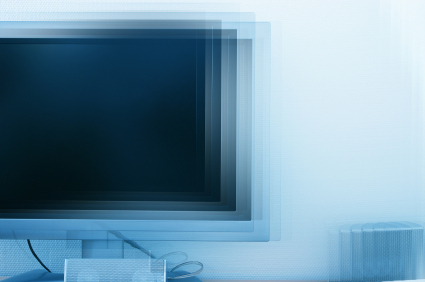What Are (these) Screens Doing to Our Eyes --- And Our Ability to See? (Wired)
And FINALLY a way to use this emoticon:

>> Every vocation has consequences for eyesight. Ice fishermen can go snowblind. Welders suffer arc eye. Ships’ lookouts hallucinate. Academics develop myopia. And texters—call it an avocation—have blurred vision.
There are at least two recorded cases of something called smartphone blindness. The New England Journal of Medicine notes that both patients had been reading their phones in bed, on their sides, faces half-hidden, in the dark. “We hypothesized that the symptoms were due to differential bleaching of photo-pigment, with the viewing eye becoming light-adapted.” Differential bleaching of the eyes! Fortunately, smartphone blindness of this kind is transient.
The blanket term for screen-borne eyesight problems is computer vision syndrome, an unsatisfactory name given to the blurring, dry eyes, and headaches suffered by the people of the screen. The name is unsatisfactory because, like many syndromes, it describes a set of phenomena without situating them in a coherent narrative—medical or otherwise. For contrast, arc eye is a burn: Welders get it from their exposure to bright ultraviolet light. Snowblindness is caused when corneas are sunburned by light reflecting off snow. Hallucinations afflict lookouts because, as Ishmael explains in Moby-Dick, they’re up at odd hours and alone, parsing the “blending cadence of waves with thoughts” for danger, whales, or other vessels; the brain and eyes are inclined to make meaning and mirages of undifferentiated land- and seascapes where none exist.
Computer vision syndrome is not nearly as romantic. The American Optometric Association uses it to describe the discomfort that people report feeling after looking at screens for a “prolonged” period of time. When screens pervade the field of vision all day, what counts as prolonged? (Moreover, reports of discomfort seem like not much to predicate a whole syndrome on.) But the AOA’s treatment of the syndrome is intriguing. This is the so-called 20-20-20 rule, which asks that screen people take a 20-second break to look at something 20 feet away every 20 minutes.
The remedy helps us reverse-engineer the syndrome. This suffering is thought to be a function not of blue light or intrusive ads or bullying and other scourges. It’s thought to be a function of unbroken concentration on a screen 8 inches to 2 feet from the eyes. The person suffering eyestrain is taught to look 20 feet away but she might presumably look at a painting or a wall. Twenty feet, though, suggests it’s depth she may be thirsty for. <<
Get your recommended daily allowance of depth. Even if you don't have depth perception, as is the case for a couple of visual artists I know. Immersing oneself in an electronic screen has more consequences than simple social isolation and causing traffic accidents.There are at least two recorded cases of something called smartphone blindness. The New England Journal of Medicine notes that both patients had been reading their phones in bed, on their sides, faces half-hidden, in the dark. “We hypothesized that the symptoms were due to differential bleaching of photo-pigment, with the viewing eye becoming light-adapted.” Differential bleaching of the eyes! Fortunately, smartphone blindness of this kind is transient.
The blanket term for screen-borne eyesight problems is computer vision syndrome, an unsatisfactory name given to the blurring, dry eyes, and headaches suffered by the people of the screen. The name is unsatisfactory because, like many syndromes, it describes a set of phenomena without situating them in a coherent narrative—medical or otherwise. For contrast, arc eye is a burn: Welders get it from their exposure to bright ultraviolet light. Snowblindness is caused when corneas are sunburned by light reflecting off snow. Hallucinations afflict lookouts because, as Ishmael explains in Moby-Dick, they’re up at odd hours and alone, parsing the “blending cadence of waves with thoughts” for danger, whales, or other vessels; the brain and eyes are inclined to make meaning and mirages of undifferentiated land- and seascapes where none exist.
Computer vision syndrome is not nearly as romantic. The American Optometric Association uses it to describe the discomfort that people report feeling after looking at screens for a “prolonged” period of time. When screens pervade the field of vision all day, what counts as prolonged? (Moreover, reports of discomfort seem like not much to predicate a whole syndrome on.) But the AOA’s treatment of the syndrome is intriguing. This is the so-called 20-20-20 rule, which asks that screen people take a 20-second break to look at something 20 feet away every 20 minutes.
The remedy helps us reverse-engineer the syndrome. This suffering is thought to be a function not of blue light or intrusive ads or bullying and other scourges. It’s thought to be a function of unbroken concentration on a screen 8 inches to 2 feet from the eyes. The person suffering eyestrain is taught to look 20 feet away but she might presumably look at a painting or a wall. Twenty feet, though, suggests it’s depth she may be thirsty for. <<
And FINALLY a way to use this emoticon:

Last edited:
